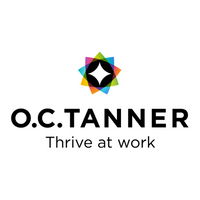How to communicate recognition strategy – and make it a benefit
Employee recognition is a strategic investment and one of the most underused resources for achieving goals and individual, cultural and business results.
When recognition is frequent, meaningful and embedded in the culture, employees are nine times more likely to feel their organisation cares about them and five times more likely to say they plan to remain with their employer for at least three more years.
While embedding recognition across the organisation can sound daunting, communicating your strategy effectively is where you should start. Here is what to consider.
Have clear goals and objectives
Make sure you understand and keep revisiting the purpose of your recognition strategy regularly, reviewing your goals and approach. By itself, recognition can improve the everyday experience of employees, but it is much more effective when it’s connected with other strategies and creates a meeting space for people far and wide.
As an example, recognition can be employed to reduce attrition, or create a stronger sense of community that fosters collaboration and innovation.
1. Establish a recognition brand
Aligning your recognition strategy with the company’s brand is a critical step in developing a sense of familiarity and engagement for employees. You may want to enlist the support of partners (internal or external) who are able to capture your company’s goals, tone, and voice into recognition communications.
Naming your recognition strategy also sets its tone and place in your culture, offering you a chance to be creative and making it stand out. By including meaningful visuals, this illustrates the power of appreciation and recognition moments, and you should aim for messages that tell stories of big and small successes, showcasing contributions and how they bring to life your company’s values. Using your brand colours and photography can further draw your people in and make recognition feel personal.
2. Know your audiences
It pays to know your audiences well from workplace dynamics through to the languages they speak. Review past strategies or speak with peers who have gone through the same process to understand where communicating recognition may have fallen short and why.
This will help you mitigate risks. If you have an employee listening strategy in place, learn what has proved most and least effective in reaching your colleagues and gather employee opinions and feedback.
3. Define or review your communications plan
A clear communications plan helps connect employees, leaders and champions, and determines the frequency of these connections. Leaders and champions can also be effective extensions of your communications strategy and involving them will help you to better understand what you don’t know.
The stage of your recognition strategy will inform your communications approach, and so for a new recognition strategy, creating awareness and engagement are key. A recognition programme that has been running for a while will require you to sustain energy and engagement and will need to be reviewed to ensure the approach is consistent with set goals.
And don’t forget about employee lifecycle moments and plan for communications that reach everyone, from as soon as they join your company until they leave.
4. Channel diversification and creativity
Employees want to know what is happening across their workplaces and it is best to reach them in their flow of work, which is not always in front of a computer or any device. In fact, 80% of the workforce is deskless, with these employees often feeling overlooked and unappreciated.
Being purposeful in how you reach all employees is therefore key. A mix of online and offline channels can help you draw attention to the recognition strategy and sustain engagement. Make use of available meeting points to further relay recognition such as town halls, team stand-ups and company-wide events. Recognition should also be visible in break rooms, hallways and on internal TVs to reach the less connected, deskless workers.
5. Review and adapt for success
Your recognition strategy should serve you well over time as long as you consistently review your approach to meet new goals and elevate your employees’ experiences.
What worked well in the past might not fully serve its purpose now, so make sure your communications reflect updates and new practices and work hard to maintain engagement.
*Statistics taken from O.C. Tanner’s 2024 Global Culture Report
Supplied by REBA Associate Member, O. C. Tanner
Giving teams the integrated tools they need when, where and how they need them.








